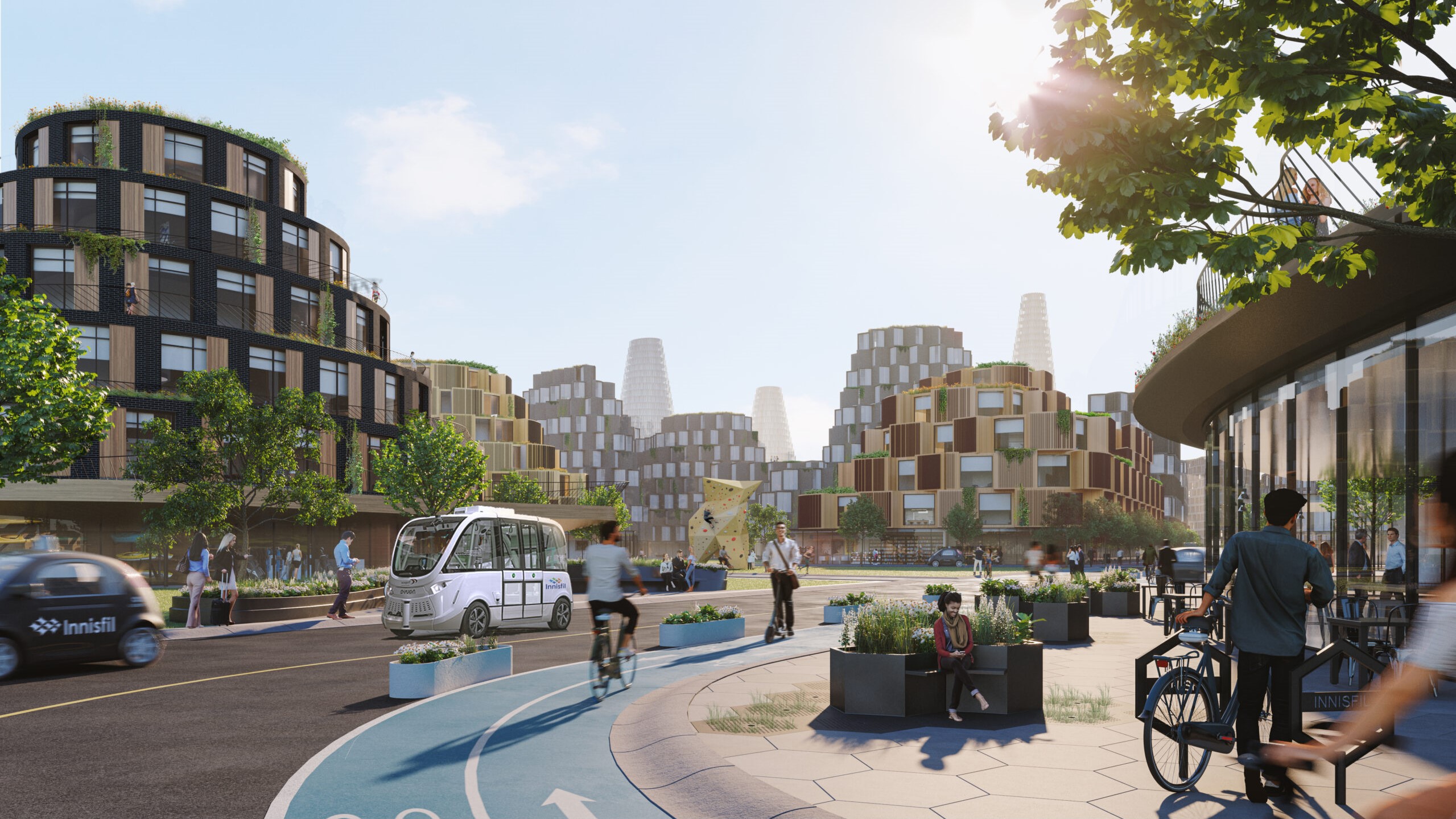The draft Transport 2050 strategy is here! What’s it all about?
The draft Transport 2050 strategy is here! What’s it all about?

Transport 2050 is the region’s next 30-year transportation strategy
After three years of development, two rounds of public engagement, hundreds of events, and 40,000 survey and idea submissions, the Transport 2050 draft strategy has arrived!
Transport 2050 will be the blueprint for our transportation future, shaping future investments, policies, and services. Download the summary document or full 2050 strategy.
What’s in the strategy? 1 vision, 5 goals, 100+ actions
Vision
The transportation vision sets out the kind of region we want by 2050:
Everyone can easily connect to the people, places, and opportunities that they need to thrive – because we all have real transportation choices, that we can count on, that we can afford, and that we can safely enjoy. Our transportation system supports an inclusive, future-ready region that advances reconciliation.
Goals
The goals and targets outline what we’re trying to achieve:
- Convenient: by 2050, walking, cycling, and transit are competitive choices accounting for at least half of all passenger trips, with taxi, ride-hailing and carsharing accounting for most of the remainder
- Affordable: we are all spending 20% less time stuck in congestion compared to today
- Reliable: none of us need to spend more than 45% of our household income on housing & transport combined
- Safe & Comfortable: reduce serious traffic injuries and fatalities by at least 5% annually until we reach zero before 2050
- Carbon-Free: by 2030, lower carbon pollution from light-duty vehicles by 65% over 2010 levels; eliminate carbon pollution from transport altogether by 2050
Actions
Over 100 actions will help us reach our goals. Some of the most transformative actions include:
- Supporting walkable, complete, and affordable communities where it’s easy to access most of your daily needs within a kilometre of home and without having to drive.
- Transforming roads that have been designed primarily for cars into people-first streets designed for everyone. Where all road users, including people with disabilities and people using transit, biking, walking, or rolling, feel safe, comfortable, and connected.
- Implementing complete networks of traffic-protected bikeways within every urban centre, an 850-kilometre network of major bikeways (map) connecting every urban centre, and abundant bicycle parking everywhere in order to provide active transportation and recreation options that are comfortable for most people to use.
- Delivering frequent local transit service, getting people within a 5-minute walk of nearly all communities within the urban parts of the region.
- Serving more people in more parts of the region with fast and reliable transit service by adding approximately 3,000-kilometres to our existing 100-kilometre rapid transit network and working with partners to implement new express and interregional connections (map).
- Prioritizing the movement of transit on roads through more extensive provision of dedicated transit lanes, priority at intersections, and sidewalk extensions at bus stops. This will enable transit users to quickly and reliably get to where they need to go without getting stuck in traffic. It will also allow us to achieve our bold vision for expanding the rapid transit network primarily in dedicated lanes at street level.
- Expanding shared mobility options across the region so that no matter who you are, where you are, or where you need to go, you’ll have access to a shared bike, e-scooter, or car when you want one.
- Changing our vehicles and how we fuel them: we’ll support the move to zero-emission vehicles with more charging options and make it easier to use electric bikes and other micromobility devices. Managing the safe and equitable introduction of automated, connected, electrified, and shared vehicles so that they work in support of our region’s goals.
- Using the power of new digital tools to work towards an efficient, reliable, and easy-to-use transportation system. Where everything is seamlessly integrated, everyone can easily plan and make trips that involve multiple modes, curb-side spaces are available when you need them, and traffic headaches are a thing of the past.
- Ensuring that everyone can afford to get around, with a commitment to universal basic mobility where fares and fees are based on an individual’s ability to pay.
A once-in-a-generation opportunity
We’re working closely with local municipalities, Metro Vancouver, the Province, and Indigenous Nations to develop Transport 2050. At the same time, Metro Vancouver is leading the development of Metro 2050, the new Regional Growth Strategy, and Climate 2050, the region’s climate policy.
Take the survey! Your feedback will inform a final Regional Transportation Strategy that will be taken to the Mayors’ Council for adoption in early 2022.






It really looks great, I’ve seen many other posts, that’s the info I needed, thanks for sharing.